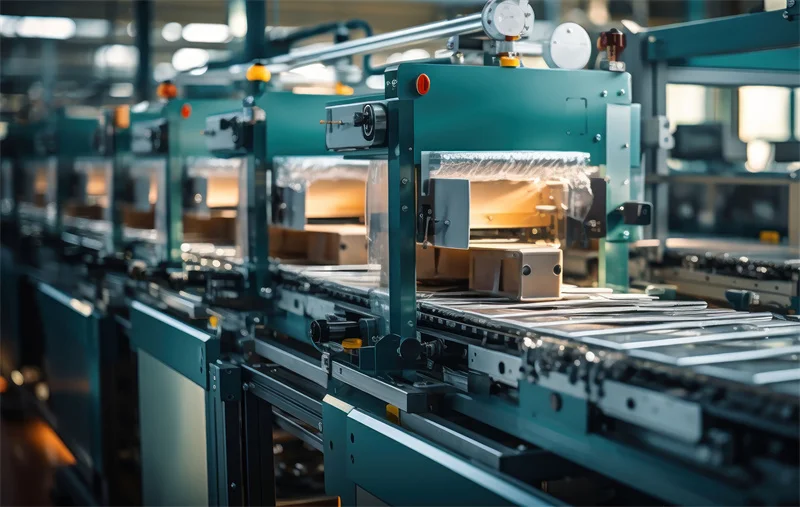
The packaging production process is complex, integrating various critical stages that determine the effectiveness, aesthetics, and functionality of the final product. From initial design to the final quality inspection, each step must be meticulously executed to meet the high standards expected in today’s market. This blog post provides an in-depth look at the entire packaging production process, guiding businesses and consumers through the intricacies of creating custom packaging.
Step 1: Producing Artwork
The design process begins with producing artwork, which is the cornerstone of effective packaging. This stage is about more than just aesthetics; it involves strategic planning to ensure the packaging design aligns with brand identity and speaks directly to the target consumer. During this phase, graphic designers work closely with marketing teams to encapsulate the brand’s message within the visual design elements of the packaging.
Key Considerations in Artwork Production:
- Brand Consistency: Ensuring the design aligns with existing brand colors, logos, and fonts.
- Legal and Regulatory Compliance: Including necessary labels, nutritional information, and compliance marks that must be readable and correctly placed.
- Functionality and Readability: Design elements must not only attract but also inform the consumer, providing a clear and engaging way to communicate the product’s benefits and uses.
Designers typically use professional graphic design software to create high-resolution images and layouts. The artwork must be meticulously detailed, with every element, from color to typography, carefully selected to ensure it conveys the right message.
Step 2: CTP Plates
Following artwork production, the process moves on to creating CTP (Computer to Plate) plates, which are essential for modern printing techniques. CTP technology streamlines the printing process by directly transferring digital images onto printing plates, eliminating the need for traditional film stripping and plate exposure.
Advantages of CTP Plates in Packaging Production:
- Increased Precision: CTP offers greater accuracy in image placement and detail than traditional methods, which is crucial for high-quality print outputs.
- Faster Turnaround Times: By bypassing older, more time-consuming steps, CTP allows for quicker production cycles, helping companies meet tight deadlines.
- Cost Efficiency: Reducing material and labor costs associated with traditional plate-making methods makes CTP a cost-effective solution for large runs.
The technology involves several steps: the digital design is first rendered in a format suitable for the CTP system, which then uses laser etching to create the image on the plate. The type of plate material (aluminum, polymer, or paper) will depend on the printing process and the desired quality of the final product.
Step 3: Stock Selection
The choice of stock or substrate is one of the most important decisions in the packaging manufacturing process. The material used not only defines the structural integrity and functional capabilities of the packaging but also its sustainability and impact on the environment.
Key Factors in Stock Selection:
- Material Type:
Common materials include paperboard, corrugated fibers, plastics, metals, and increasingly, biodegradable and compostable options. Each material has distinct characteristics and is chosen based on the product requirements, such as weight, durability, moisture resistance, and aesthetic appeal.
- Sustainability
With growing environmental concerns, selecting eco-friendly materials has become crucial. Options such as recycled content, sustainably sourced fibers, and materials that offer easier recycling post-consumer use are favored.
- Cost Effectiveness
Budget constraints play a significant role in material selection. It’s essential to balance quality and sustainability with cost to ensure the packaging is economically viable.
Understanding the properties of different materials and their impact on the product and environment allows companies to make informed decisions that align with their branding and sustainability goals.
Step 3: Printing
After selecting the appropriate stock, the next step is printing, which brings the visual elements of the packaging to life. The choice of printing technique can greatly influence the look, feel, and cost of the final product.
Popular Printing Techniques in Packaging:
- Offset Printing: Ideal for high-quality, detailed images on large runs, offset printing offers excellent color fidelity and cost-effectiveness for larger quantities.
- Flexography: Known for its versatility, flexography is suitable for a wide range of materials, including plastic, cellophane, and metallic films. It is commonly used for large runs of labels, packaging films, and corrugated cardboard.
- Digital Printing: Best for short runs and custom designs, digital printing allows for easy customization and quick turnaround times. It’s perfect for market testing new designs or for products that require frequent updates.
Step 4: Lamination
Lamination refers to the process of applying a thin layer of plastic film to paperboard or other material to enhance its strength and durability. This protective coating is crucial for products that require resistance to environmental factors such as moisture, oil, and wear-and-tear.
Benefits of Lamination in Packaging:
- Enhanced Durability: Lamination protects the packaging from physical damage and environmental factors, prolonging the product’s shelf life.
- Improved Aesthetic Appeal: A laminated surface can significantly enhance the visual quality of packaging with options for glossy, matte, or satin finishes.
- Resistance to Contaminants: By sealing the surface, lamination helps prevent contamination from oils, water, and other substances.
- Increased Rigidity: Adding a laminated layer can provide additional rigidity, which is especially beneficial for packaging that needs to maintain its shape during shipping and handling.
Step 5: Die-Making
Die-making is the process of creating a custom-shaped die that is used to cut and form packaging materials into specific designs. This custom tooling is critical for achieving precision cuts and intricate details in packaging.
Steps Involved in Die-Making:
- Design Specification: The die is designed based on the packaging’s dimensions and complexity. This involves detailed CAD drawings that specify all cuts, creases, and perforations.
- Material Selection: Dies are typically made from steel rule for standard shapes or rotary dies for high-volume or intricate designs.
- Construction: The die is constructed by embedding shaped steel blades into a wooden board or by assembling a cylindrical rotary die. This requires precision engineering to ensure that all parts of the die will function correctly during production.


